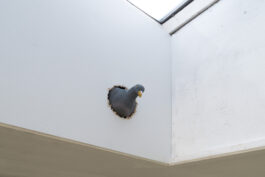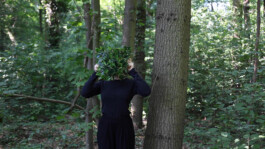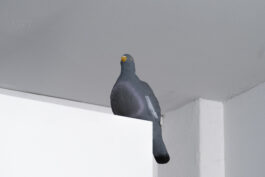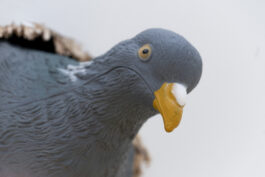















Getting inside the head of an ox — 2019
‘Getting inside the head of an ox’ is a visual essay investigating the instruments and behaviours human developed to closely look at nature and animal life, shaping thier own bodies in order to blend in or reproduce nature – be it for amateurish practice, scientific or political purposes. The narration departs from a book titled ‘Wild Nature’s Way’ by the Kearton brothers – two British naturalists and pioneers in wildlife photographers – but it expands to diverse related subjects. It raises questions on basic but yet extremely contemporary human behaviour: the ongoing urge to observe, record and study, in order to control and conquer. Our relationship with animals evolves, and becomes increasingly complex in this era of rapid technological changes.
single channel video, sound, 8 min and plastic decoy pigeon
exhibition view at Trixie, The Hague, group show curated by Elena Apostolovski
photos 4, 10, and 16 by Ariane Toussaint

image from ‘Wild Nature's Ways’ by Richard Kearton, 1903 (archive.org)
















Getting inside the head of an ox — 2019
‘Getting inside the head of an ox’ is a visual essay investigating the instruments and behaviours human developed to closely look at nature and animal life, shaping thier own bodies in order to blend in or reproduce nature – be it for amateurish practice, scientific or political purposes. The narration departs from a book titled ‘Wild Nature’s Way’ by the Kearton brothers – two British naturalists and pioneers in wildlife photographers – but it expands to diverse related subjects. It raises questions on basic but yet extremely contemporary human behaviour: the ongoing urge to observe, record and study, in order to control and conquer. Our relationship with animals evolves, and becomes increasingly complex in this era of rapid technological changes.
single channel video, sound, 8 min and plastic decoy pigeon
exhibition view at Trixie, The Hague, group show curated by Elena Apostolovski
photos 4, 10, and 16 by Ariane Toussaint

image from ‘Wild Nature's Ways’ by Richard Kearton, 1903 (archive.org)